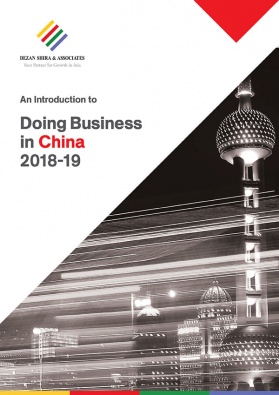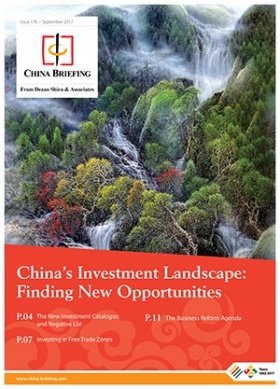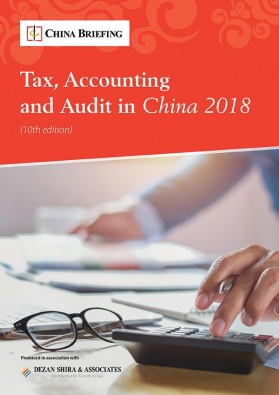China’s Greater Bay Area: From Factory of the World to Mega Tech Hub
One day in the not too distant future, say in around 20 years’ time, we may call the Greater Bay Area (GBA) of China by a new name; ‘Xiānggǎngshen’ the logical end point of the formal merging of Hong Kong and Macau, as well as Shenzhen, Zhuhai, and Guangzhou as a super metropolis – or perhaps ‘Megopolis’ – that is already one of the major technology manufacturing centers of the world.
David Ricardo developed the classical theory of comparative advantage 200 years ago, which has been proven in the GBA by encouraging collaboration from different cities, regions, or companies to bring to the table a specific good or a service at a lower opportunity cost than any other country or region.
Today the area is home to 67 million people – about the same as the UK, the former colonial administrator of Hong Kong – with a GDP of US$1.5 trillion or about half the UK in 2017 and similar to that of South Korea. If the GBA were a nation state it would rank 12th in the world.
Even with the recent slowdown, the GBA is still growing at twice the OECD average. This equates to a threefold increase in GDP by 2030 – to reach about US$4.6 trillion. This would make it the top spot among all ‘bay areas’ in the world, including Tokyo and San Francisco.
From humble beginnings – epitomized in Li Ka Shing’s plastic flower factory in Hong Kong – to the center of high technology manufacturing, illustrated by Foxconn’s sprawling Shenzhen Longhua Campus with 250,000+ employees – the region has grown in the past 40 years faster than any other place on earth. Today the GBA invents, manufactures, finances, and ships more products than any other comparable location on earth.
Technology has been key to the region’s rapid growth, evolving from ‘factory to the world’ in the first phase (1980 – 2010) to becoming the epicenter of technology in the past ten years. This was recognized as far back as in 2006 when IBM moved their global procurement HQ to Shenzhen and JD.com group built the RMB 2 billion (US$288.3 million) service industrial park in Dongguan. Meanwhile, thousands of factories in Shenzhen that were making low value products, have closed or moved to lower cost countries, such as Vietnam and Cambodia.
What makes the GBA so different from any other large metro area is that it combines most of the factors that have individually proven successful elsewhere into one gigantic innovation, manufacturing, and logistics hub.
This may best be illustrated by the fact that the combined container throughput of the GBA ports of Hong Kong and Shenzhen topped the world at about 4.5 times than that of New York, San Francisco, and Tokyo combined in 2017. Hong Kong has the world’s largest airfreight terminal, which will see increased throughput when the airport’s third runaway is completed by 2023.
According to CBRE, a real estate consulting firm, the GBA may be the largest economy among global bay areas as early as 2020, accelerated by the Hong Kong-Zhuhai-Macau Bridge and Guangzhou-Shenzhen-Hong Kong express rail link that opened in late 2018.
In 2017, the patent office in China received more applications than the combined total submitted to the patent offices of Europe, Japan, Korea, and the U.S. The vast majority of these were from local companies. Patent applications in the rest of the world are basically flat year-on-year, only China is showing growth, driven primarily by domestic innovation.
The great universities that spawned the US’ Silicon Valley and Cambridge Route 128 and the UK’s Silicon Fen are no longer as physically relevant today. Instant fiber optic connectivity means that Peking, Tsinghua, or any other major university may just as well be in Shenzhen instead of thousands of kilometers away.
The GBA is home to some of the most innovative technology firms, including internet giant Tencent, drone maker DJI, telecom innovators Huawei and ZTE, and battery/electric vehicle (EV) manufacturer BYD, which has topped the world in delivery of EV’s for three years in a row.
The GBA is also emerging as the manufacturing destination of choice in automotive innovation and driverless vehicles. Shenzhen already hosts the world’s biggest automotive technology trade shows and exhibitions, and China is the acknowledged leader in artificial intelligence (AI).
The respected legal and financial infrastructure of Hong Kong, including the Hong Kong stock market developing new listing rules, offers a ready source of talent and fund raising as well as listing opportunities for innovative companies to raise funds. The Shenzhen and Hong Kong stock markets together are larger than Tokyo and 10 times bigger than Singapore. By 2020, they could easily rival the NASDAQ in the total value of listings.
This great convergence of the physical and the digital world is part of the fourth industrial revolution, or Industry 4.0, and living proof that the vision outlined by the World Economic Forum two years ago is happening right now, before our very eyes.
The answer is clear: if you want to make your fortune today, go East – as I did 40 years ago.
Mr Michael Mudd is the founder and Managing Partner of Asia Policy Partners LLC, a consultancy providing thought leadership on technology policy for digital transformation, data governance, security, privacy, compliance, standards and trade for business and government.
An appointed expert to JTC-1 of the ISO, he is also a member of the Government of Hong Kong’s Expert Group on Cloud Computing, specifically the working group on Cloud security and privacy where he advises on policy.
He is a member of the Policy advisory committee of the Hong Kong Computer Society and the chief representative of the Open Computing Alliance in the APAC and MEA. He has written and conducts interactive coaching on technology risk and digital security training for non-technical staff to mitigate losses from fraud, and GDPR briefing for CXO’s. He may be contacted at asiaitpolicy@outlook.com.
About Us
China Briefing is produced by Dezan Shira & Associates. The firm assists foreign investors throughout Asia and maintains offices in China, Hong Kong, Indonesia, Singapore, Russia, and Vietnam. Please contact info@dezshira.com or visit our website at www.dezshira.com.
- Previous Article Shanghai, Moscow Exchanges Increase Cooperation, Boost Investment Prospects
- Next Article Opening a Training Center in China









